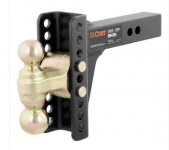How does it stretch if it sticks and simply stops turning? Even on good threads 40% of the torque is used to overcome thread friction. The friction is a guess at best.
This is kind of why they came up with dry, they cant get people to do it right. The book says,,, lightly lubed threads, next guy figures that means never seize, next decides its pipe dope, next guy greases it. Its really a matter of getting people to do it right so they finally give up. Another few years and we will have a whole generation of stuck fasteners only ratyher recently inbstalled or seized at the time of installation.
I asked some of the engineers that were involved in some of this moere early on in the internet and the answer was,,,,,,,,,,,,,,,,,, some people just wont get it. Its what he said.
They recommend the lube "under the turned element" There are so many terms I cant even remember them all involved in trying to keep the friction at least consistent.
Along with this I read about every book the Cincinatti public library had on it and on prestress and post tension concrete. Most of it was over my head but I could grasp the principle,,, that dry you can never gage what is friction and how much is applied to tension and how much seizure occurs at installation, how much is required to restart, how ruff threads are.
As one post above said,,, they run the thing back and forth which is good, smooths the threads while not under tension.
One reason for wheel nuts dry s not the threads as it is the alum wheels, with steel we want spray but alum with slippery stuff,,, especially anti seized and tapered fit it drives them so tight especially hitting with air gun and actually deforms the hole.


